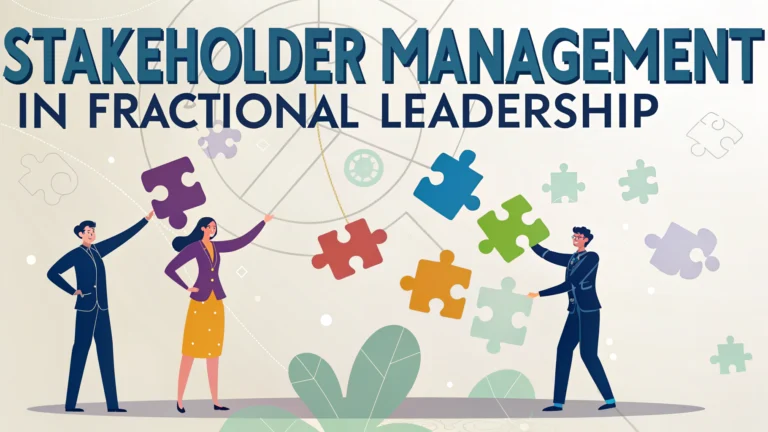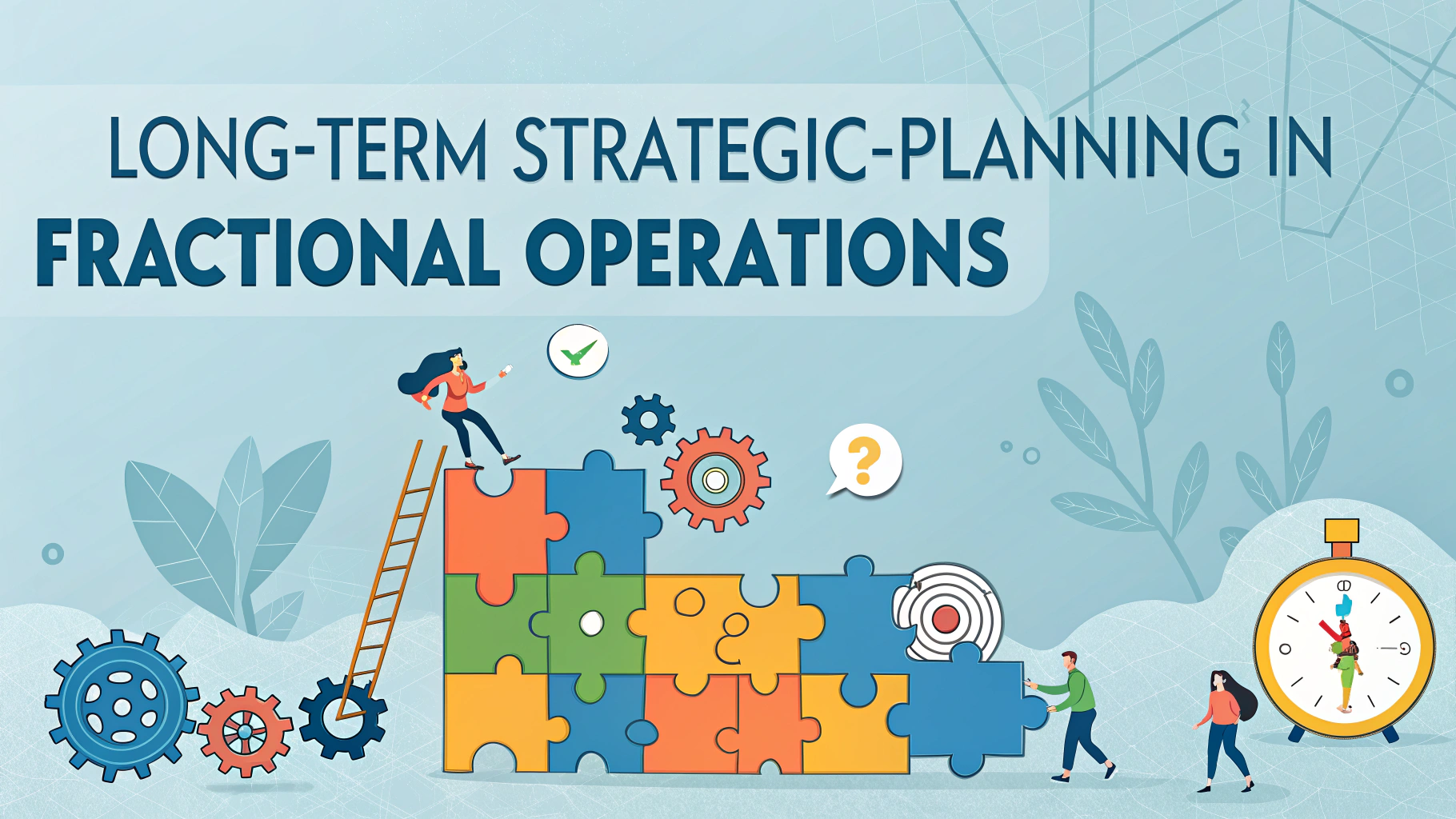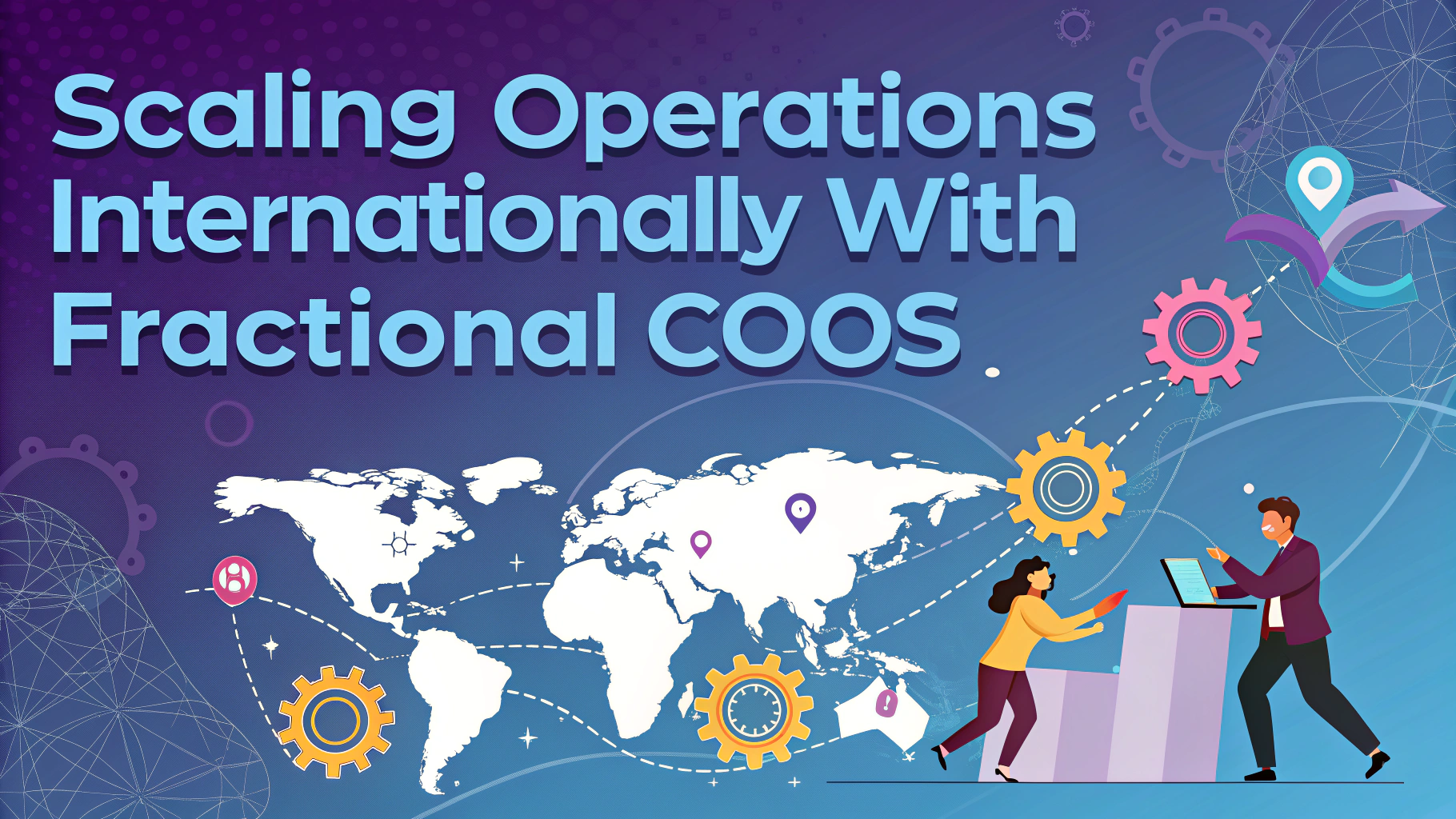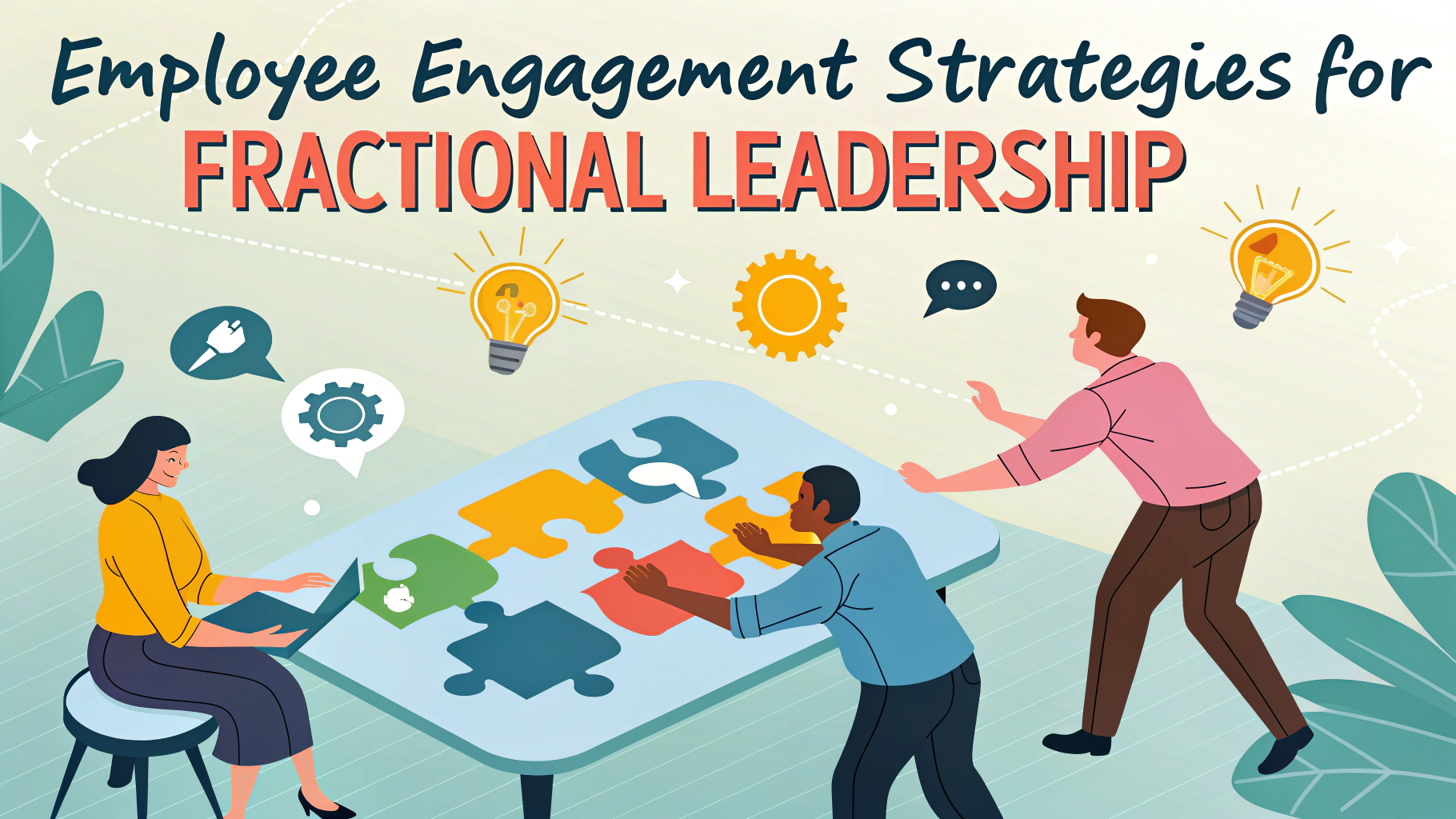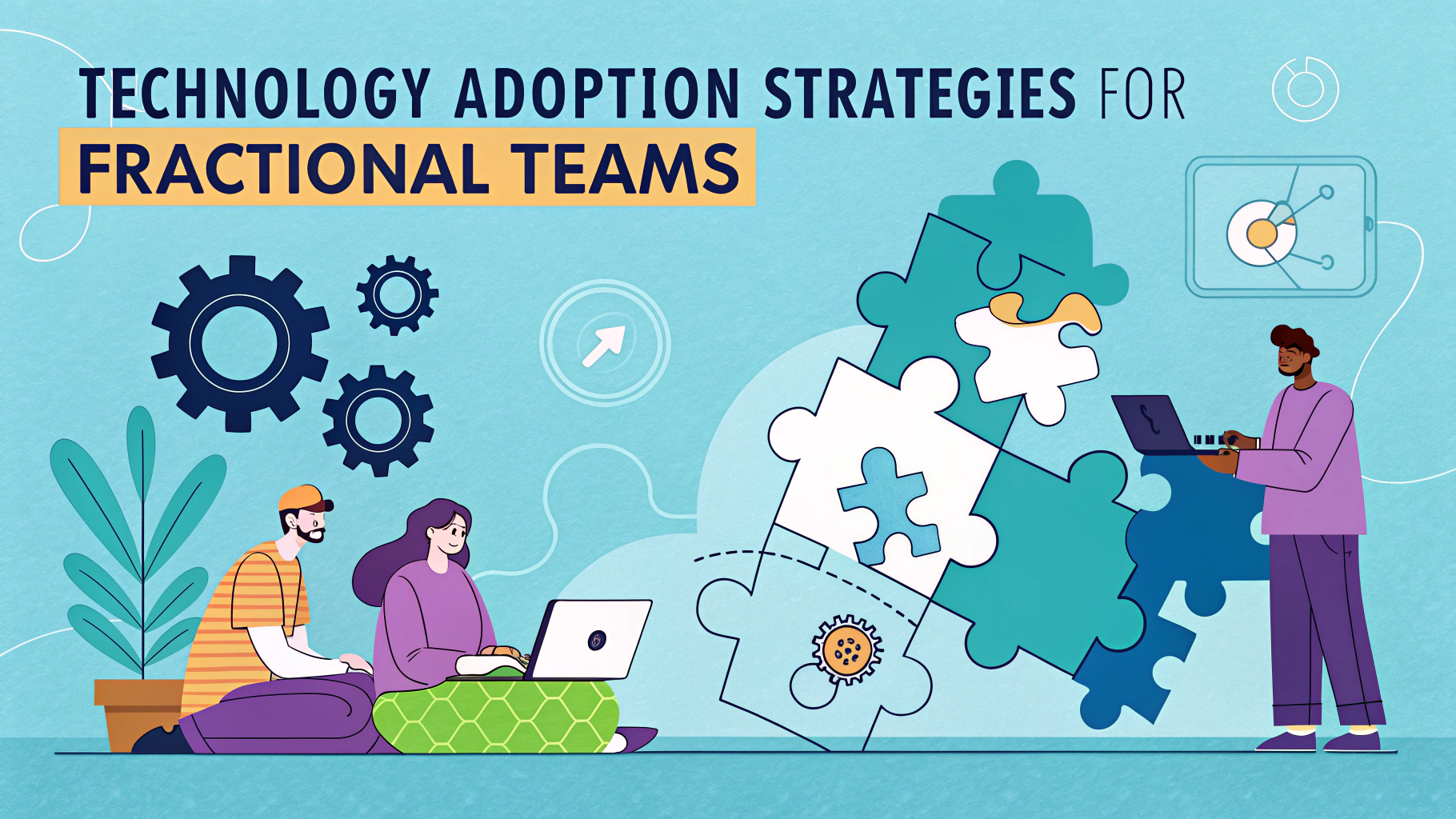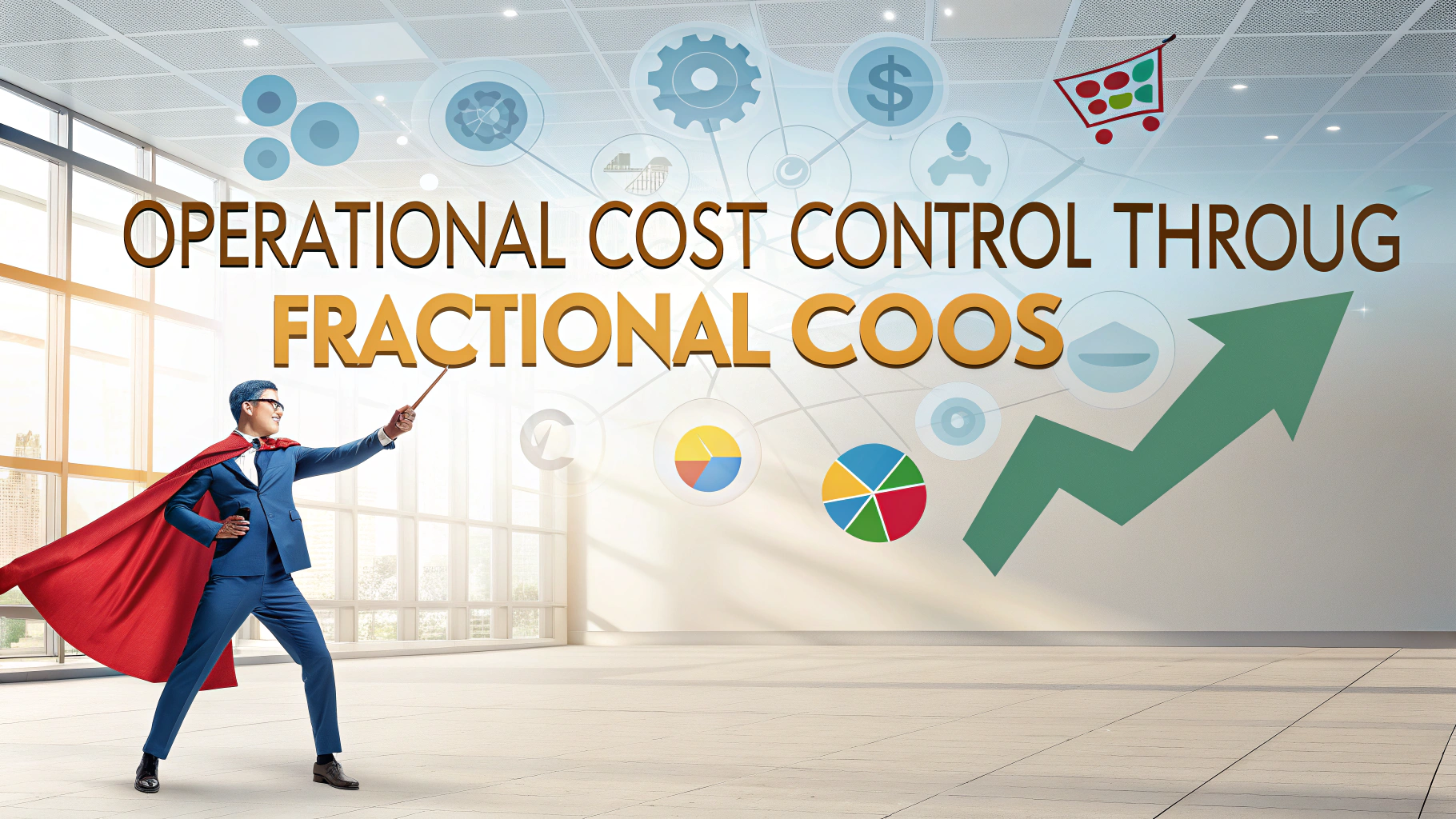Managing stakeholders effectively can make or break a fractional COO’s success in driving organizational change and achieving business objectives.
Fractional leadership requires a unique approach to stakeholder management, as these temporary executives must quickly build trust and navigate complex relationships within compressed timeframes.
This guide explores practical strategies for fractional COOs to identify, engage, and align key stakeholders while maintaining productive partnerships throughout their engagement.
Identifying Key Stakeholders
Start by mapping out all individuals and groups who can influence or are affected by your initiatives as a fractional COO.
- Executive team members
- Department heads
- Core team members
- Board members
- Key clients
- Strategic partners
- Regulatory bodies
Building Trust Quickly
As a temporary executive, establishing credibility and trust must happen rapidly.
- Schedule one-on-one meetings within the first week
- Listen actively to concerns and perspectives
- Share relevant past experiences and successes
- Follow through on commitments consistently
- Maintain open communication channels
Communication Strategies
Develop a structured communication plan tailored to different stakeholder groups.
| Stakeholder Type | Communication Frequency | Format |
|---|---|---|
| Executive Team | Weekly | In-person meetings, status reports |
| Department Heads | Bi-weekly | Team meetings, email updates |
| Board Members | Monthly | Formal presentations, written reports |
Managing Expectations
Set clear boundaries and expectations from the start of your engagement.
- Define scope of work and deliverables
- Establish decision-making authority
- Create realistic timelines
- Document agreements in writing
Handling Resistance
Address stakeholder resistance through proactive engagement and solution-focused discussions.
- Acknowledge concerns openly
- Provide data-backed reasoning
- Offer alternative solutions
- Create feedback loops
- Document and address issues promptly
Measuring Stakeholder Satisfaction
Implement regular check-ins and feedback mechanisms to gauge stakeholder satisfaction.
- Monthly satisfaction surveys
- Progress reviews against goals
- Stakeholder feedback sessions
- Project milestone evaluations
Knowledge Transfer Planning
Develop a clear exit strategy that ensures continuity after your departure.
- Document processes and decisions
- Train internal team members
- Create handover documentation
- Schedule transition meetings
- Establish post-engagement support parameters
Keys to Long-term Success
Focus on creating sustainable improvements that persist beyond your engagement.
- Build internal capabilities
- Document best practices
- Establish metrics for success
- Create accountability systems
- Maintain professional relationships for future reference
Change Management Best Practices
Implement proven change management methodologies to drive stakeholder adoption.
- Create a compelling vision for change
- Develop clear implementation roadmaps
- Identify and empower change champions
- Monitor adoption metrics
- Celebrate quick wins
Risk Mitigation Strategies
Proactively identify and address potential stakeholder-related risks.
- Conduct regular risk assessments
- Develop contingency plans
- Monitor stakeholder sentiment
- Address conflicts early
- Maintain documentation of risk responses
Building Cross-functional Alignment
Foster collaboration between different departments and stakeholder groups.
- Facilitate cross-functional meetings
- Create shared objectives
- Develop integrated workflows
- Establish common metrics
- Promote knowledge sharing
Maximizing Stakeholder Value
As a fractional COO, your success depends on delivering lasting value while maintaining strong stakeholder relationships throughout your engagement.
- Focus on measurable business outcomes
- Build sustainable internal capabilities
- Maintain professional boundaries
- Document successes and lessons learned
- Leave a positive organizational legacy
FAQs
- What is stakeholder management in the context of fractional leadership?
Stakeholder management involves identifying, analyzing, and strategically engaging with key individuals or groups who have an interest in or influence over the organization’s operations while serving in a part-time executive capacity. - How do fractional COOs effectively manage multiple stakeholder relationships?
Fractional COOs manage stakeholder relationships through regular communication channels, clear expectation setting, prioritization matrices, and structured engagement plans while balancing limited time commitments. - What are the key stakeholder groups a fractional COO typically needs to manage?
Key stakeholder groups include the CEO/business owner, leadership team, employees, clients, vendors, board members, investors, regulatory bodies, and sometimes community partners. - How can a fractional COO maintain stakeholder trust despite not being full-time?
Trust is maintained through consistent communication, delivering on promises, transparent reporting, setting clear boundaries, and establishing reliable systems and processes that work even in their absence. - What tools and technologies are useful for stakeholder management in fractional leadership?
Essential tools include stakeholder mapping software, project management platforms, communication tools like Slack or Microsoft Teams, CRM systems, and collaborative documentation platforms. - How should fractional COOs handle stakeholder conflicts?
They should address conflicts through active listening, neutral mediation, documented decision-making processes, and clear escalation procedures while maintaining professional boundaries. - What are the best practices for stakeholder communication in a fractional role?
Best practices include establishing regular check-in schedules, using standardized reporting templates, maintaining clear documentation, and leveraging both synchronous and asynchronous communication methods. - How do you measure successful stakeholder management as a fractional COO?
Success is measured through stakeholder satisfaction surveys, project milestone achievement, relationship longevity, conflict resolution rates, and alignment with organizational objectives. - What are common challenges in stakeholder management for fractional leaders?
Common challenges include time constraints, establishing authority, managing expectations, maintaining consistency, coordinating across time zones, and balancing multiple client needs. - How often should fractional COOs engage with different stakeholder groups?
Engagement frequency varies by stakeholder importance and project needs, typically ranging from daily communication with key leadership to monthly or quarterly interactions with peripheral stakeholders.
